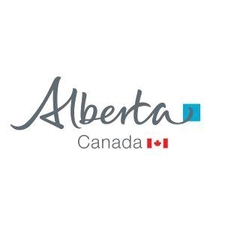recreational
Type of resources
Available actions
Topics
Keywords
Contact for the resource
Provided by
Years
Formats
Representation types
Update frequencies
status
Service types
-

A layer of points which delinate a change in shoreline type
-

A layer showing all polygon features that have not been mapped using the Physical shorezone Mapping system
-

The locations of coastal British Columbia recreational and pleasure craft cruising routes. The Coastal BC datasets are circa 2004 and legacy in nature. Caution should be exercised when using this data, as it may not be accurate or complete. There are currently no plans to update.
-

Cyanobacteria (also referred to as blue-green algae) are common photosynthetic bacteria that live in surface waters. Under favorable conditions, such as warm water and high nutrient content, these bacteria can form nuisance “blooms”. The presence of blooms in recreational water causes unpleasant aesthetics and exposure to some toxin-producing blooms may pose potential health risks. Contact with blooms can cause skin rashes and irritation, itchy eyes, and ear infections. Inhaling water may cause allergic-like reactions, runny noses or sore throats. Ingestion of toxins can cause a range of symptoms (e.g., hepatotoxic or neurotoxic effects, and even death). There has been increased public awareness as a result of research over the past 20 years, recent monitoring efforts, and increased public education on the topic. In 2009, Alberta Health and Alberta Health Services began seasonal monitoring for cyanobacterial blooms at high use recreational beaches. In 2019, beach operators took over the sampling role from Alberta Health Services under the Alberta Safe Beach Protocol. Water is collected from shallow water adjacent to beaches and submitted to laboratories for analysis of cyanobacterial bloom indicators. These data, along with visual inspection, are used to characterize potential cyanobacterial blooms and issue recreational water use advisories when cyanobacteria are found in a waterbody at levels that can affect human health. The data presented below is organized into two files that contain supporting data and key cyanobacterial bloom indicators, and counts of individual cyanobacteria species, respectively. Each row represents a water sample collected from an Alberta beach. In the cyanobacteria species data, each water sample will have many associated rows of data. Each column represents a piece of information about that water sample (e.g., key indicators and supporting information) that is used to characterize cyanobacterial blooms. Data from the current year (2025) should be considered preliminary and might change with further quality control/quality assurance steps. This dataset is updated monthly between June and September each year. For more information on these indicators please refer to the column descriptions “Usage Considerations” associated with this dataset.
-

Under the Yukon Waters Act, the Yukon Water Board issues water use licences for the use of water and/or the deposit of waste to water. To see the applications, and their reports, please visit Waterline, our online registry at [https://www.yukonwaterboard.ca/](https://www.yukonwaterboard.ca/) . Distributed from [GeoYukon](https://yukon.ca/geoyukon) by the [Government of Yukon](https://yukon.ca/maps) . Discover more digital map data and interactive maps from Yukon's digital map data collection. For more information: [geomatics.help@yukon.ca](mailto:geomatics.help@yukon.ca)
-

Under the Yukon Waters Act, the Yukon Water Board issues water use licences for the use of water and/or the deposit of waste to water. To see the licences, and their reports, please visit Waterline, our online registry at [https://www.yukonwaterboard.ca/.](https://www.yukonwaterboard.ca/) Distributed from [GeoYukon](https://yukon.ca/geoyukon) by the [Government of Yukon](https://yukon.ca/maps) . Discover more digital map data and interactive maps from Yukon's digital map data collection. For more information: [geomatics.help@yukon.ca](mailto:geomatics.help@yukon.ca)
-
The USGS Transportation service from The National Map (TNM) is based on TIGER/Line data provided through U.S. Census Bureau and supplemented with HERE road data to create tile cache base maps. Some of the TIGER/Line data includes limited corrections done by USGS. Transportation data consists of roads, railroads, trails, airports, and other features associated with the transport of people or commerce. The data include the name or route designator, classification, and location. Transportation data support general mapping and geographic information system technology analysis for applications such as traffic safety, congestion mitigation, disaster planning, and emergency response. The National Map transportation data is commonly combined with other data themes, such as boundaries, elevation, hydrography, and structures, to produce general reference base maps. The National Map viewer allows free downloads of public domain transportation data in either Esri File Geodatabase or Shapefile formats. For additional information on the transportation data model, go to http://nationalmap.gov/transport.html.
-
The USGS Transportation service from The National Map (TNM) is based on TIGER/Line data provided through U.S. Census Bureau and road data from U.S. Forest Service. Some of the TIGER/Line data includes limited corrections done by USGS. Transportation data consists of roads, railroads, trails, airports, and other features associated with the transport of people or commerce. The data include the name or route designator, classification, and location. Transportation data support general mapping and geographic information system technology analysis for applications such as traffic safety, congestion mitigation, disaster planning, and emergency response. The National Map transportation data is commonly combined with other data themes, such as boundaries, elevation, hydrography, and structures, to produce general reference base maps. The National Map download client allows free downloads of public domain transportation data in either Esri File Geodatabase or Shapefile formats. For additional information on the transportation data model, go to http://nationalmap.gov/transport.html.
 Arctic SDI catalogue
Arctic SDI catalogue